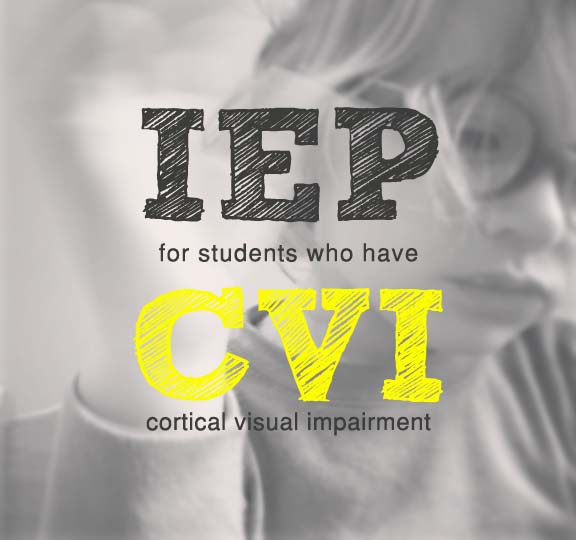 With the help of TVI Matt Tietjen*, we have compiled a list of considerations when writing an Individualized Education Program (IEP) for a student who has cortical visual impairment (CVI). IEPs look different from state to state, but contain the same information. If you are a parent or a provider who works with a child with CVI, no matter where you live, here are some ideas to think about. It should be noted that our source for all discussion of CVI, the phases, the ten characteristics, accommodations and modifications is Cortical Visual Impairment: An Approach to Assessment and Intervention (2007, AFB Press) by Christine Roman-Lantzy.
With the help of TVI Matt Tietjen*, we have compiled a list of considerations when writing an Individualized Education Program (IEP) for a student who has cortical visual impairment (CVI). IEPs look different from state to state, but contain the same information. If you are a parent or a provider who works with a child with CVI, no matter where you live, here are some ideas to think about. It should be noted that our source for all discussion of CVI, the phases, the ten characteristics, accommodations and modifications is Cortical Visual Impairment: An Approach to Assessment and Intervention (2007, AFB Press) by Christine Roman-Lantzy.
Training on Cortical Visual Impairment
Due to the lack of awareness and knowledge of CVI among providers, let’s start with ongoing training on cortical visual impairment. The place to do that is in the IEP under Support for School Personnel. When you specify CVI training for the educational team, it is exactly that – it is for the entire team and cannot target individual team members, such as vision teachers or new team members. When adding this, you should also note the frequency of CVI training (monthly, quarterly, annually, etc.).
Speaking of CVI training, we all know that every student with CVI should have an IEP team member who is
CVI Endorsed. You can make this request to the student’s IEP team.
About Accommodations and Modifications
Many accommodations and modifications are directly related to the
CVI ten characteristics (Roman-Lantzy). These would go under the Program Accommodations/Modifications section in the IEP. A good standard is one objective (or goal) for each unresolved CVI characteristic (we do not include the reflex characteristic).
Remember that “accommodation” is not a synonym for “goal.” Accommodations are different than IEP goals and objectives. Accommodations are meant to ensure that work is designed to meet a student’s current level of ability in these areas. Goals and Objectives are to help him move beyond his current ability in these areas.
For example, consider a child with CVI who can recognize realistic color photographs of objects, but is unable to recognize images that are more abstract. This would fall under the CVI characteristic “difficulty with complexity of objects,” which includes many types of visual identification tasks. Since the bulk of educational materials (think worksheets, children’s books, etc.) feature cartoonish illustrations, clip art, black and white line drawings and other types of abstract imagery, this child would clearly need an accommodation so that materials are accessible. The accommodation might read: “substitute real, color photographs for illustrations in books and clip art on worksheets.” This accommodation recognizes the child’s “difficulty with complexity of objects” characteristic and ensures that the child will be able to interpret the books and worksheets he is given in class.
At the same time that we recognize the child’s difficulty in this area (accommodation), we also need to recognize his potential for growth in this area (goal). We could set a goal that, “child will improve his ability to interpret 2D images.” An example of an objective under this goal might be, “Given a realistic color photograph of an object and a black and white line drawing of the same object with salient features (Roman-Lantzy) highlighted in child’s preferred color, child will point to the salient features on the color photograph and then point to the corresponding salient features on the black and white line drawing.” So, we would be using an accommodation and a goal to address the same characteristic – the goal to encourage the child’s growth in this characteristic, and an accommodation to ensure that class materials given to the student are accessible and reflect his current difficulty with this characteristic. In other words, we write the accommodation with our eye on the child’s present and the goal with our eye on the child’s future.
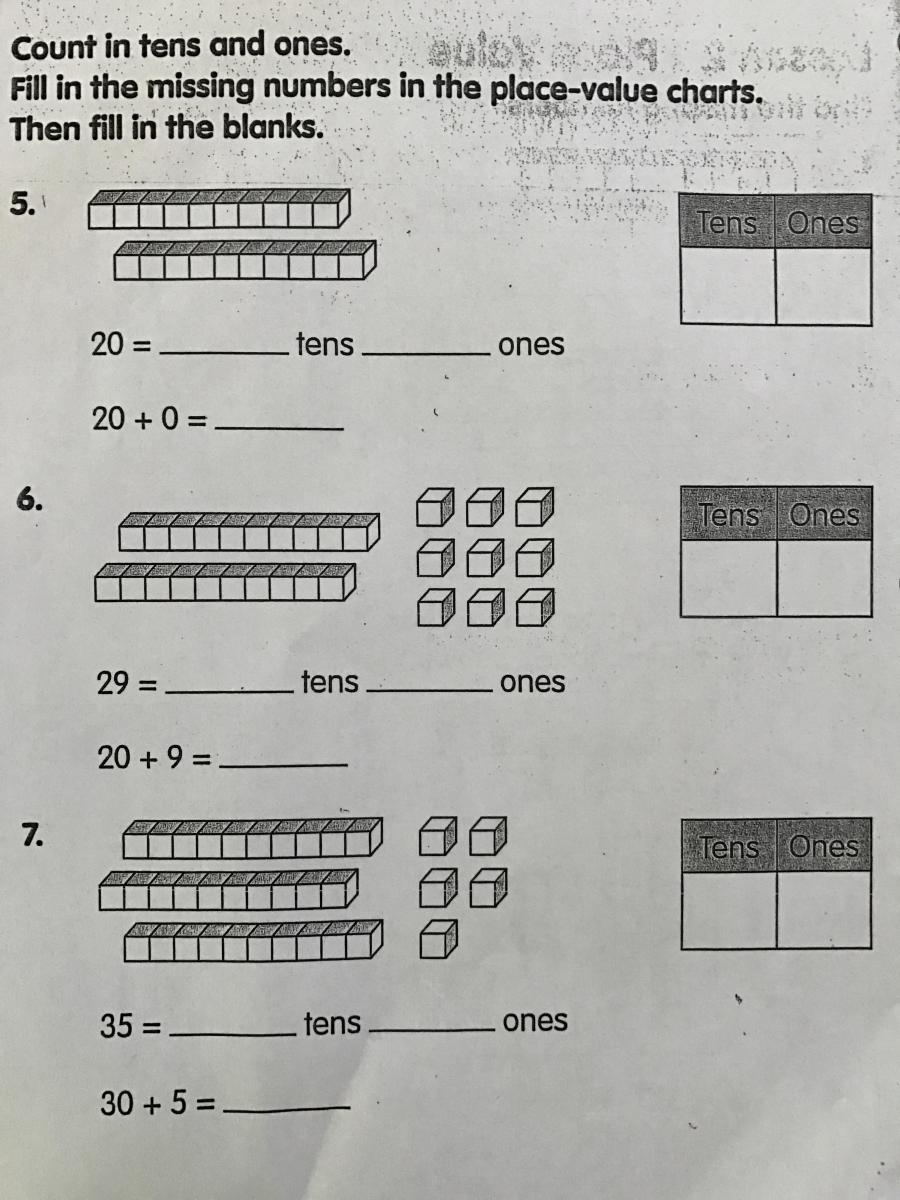
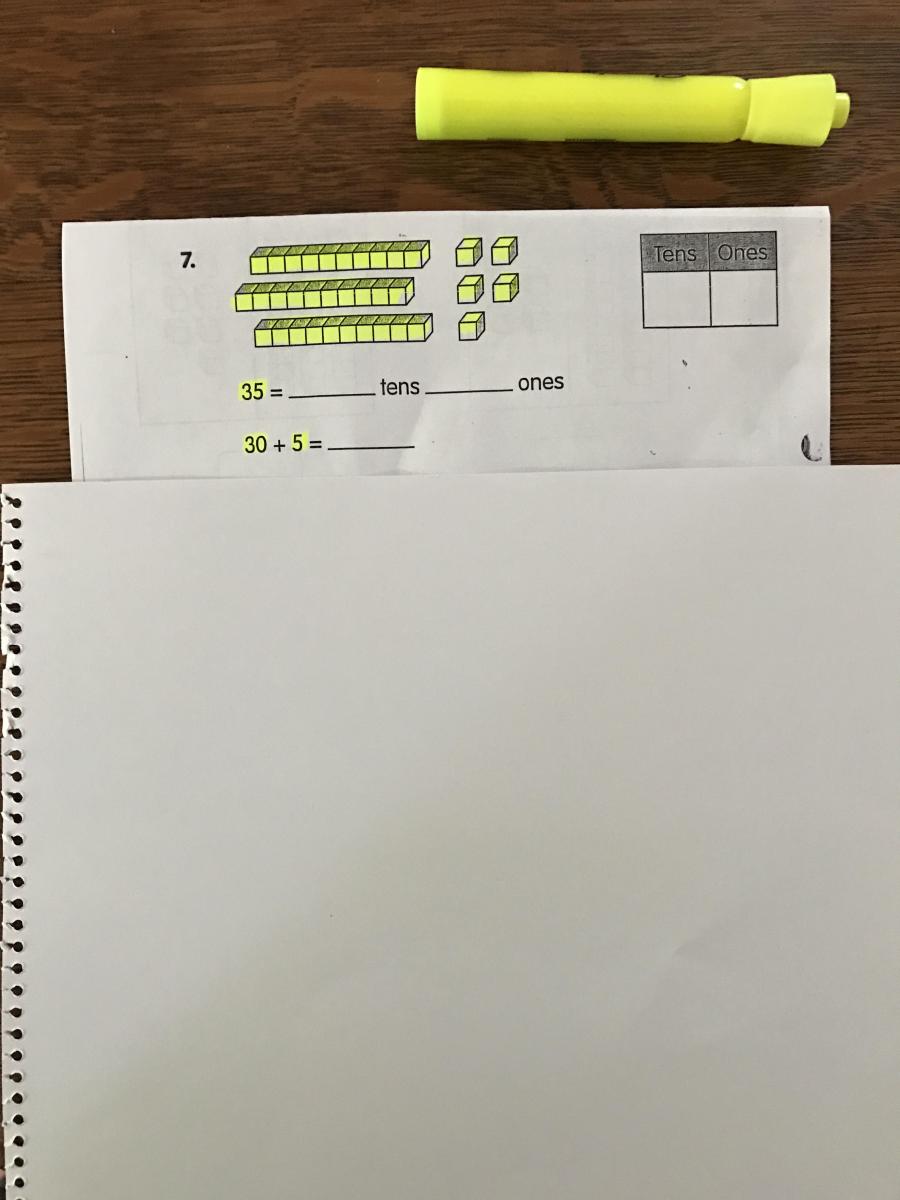
Ideas for Accommodations and Modifications
We can use information from the child’s CVI Range Assessment to generate accommodations and modifications for the IEP. Specifically, we can use the information from Rating II (which indicates how the child is presenting in each of the characteristics) to write accommodations for nine of the ten characteristics (we do not include blink reflexes) (Roman-Lantzy). Below are some examples of specific accommodations with the relevant characteristic in parenthesis:
-
Bold color marker for writing (Color)
-
Highlighting school worksheets and materials in student’s preferred color (Color)
-
Use of iPad for backlighting of materials to increase visual attention and decrease visual fatigue (Light, Complexity)
-
Use of slantboard (Visual field)
-
Use of visual occluder (Complexity of array)
-
Extra time to look at materials (Latency)
-
Allow for close range examination of materials (Complexity of array)
-
Preferred seating. This will look different for each student and should include factors such as visual field, light (facing away from windows) and movement (busy school hallways), and the amount of visual complexity within the student’s visual field. Alternatively, you could say, Use black fabric to reduce visual complexity within the classroom (Visual field, Light, Movement, Complexity of array).
-
When looking at pictures of objects, highlight and talk about 2-3 salient features (Roman-Lantzy) (Color)
-
When looking at new objects or pictures, use Comparative Language to talk about how the item is similar or different to an object the student is familiar with (Roman-Lantzy)
-
When introducing new sight words, add a red bubble outline around the word and discuss salient features of the word (listen to Dr Roman on Phase III literacy here)
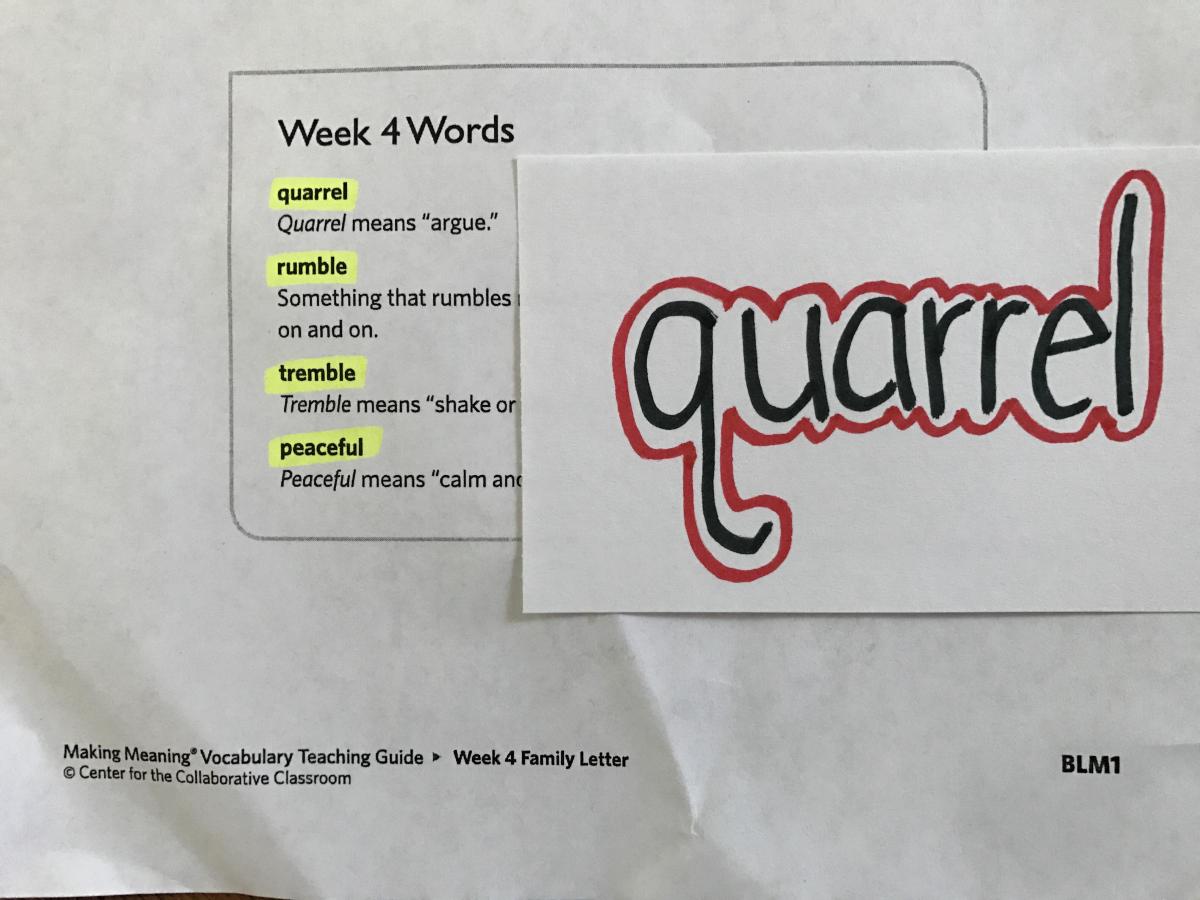
-
Orient work sheets and materials left to right, for purposes of preliteracy (Visual field)
-
Vision breaks are so important for students who have CVI. These should happen in an area with little visual or sensory input. For some kids, this can be as simple as the child closing his eyes and resting his head on the desk for a few minutes.
-
No laminating. Or opt for matte laminate, a non-glossy laminate that works better for some students. No glare. (Light, Movement)
-
Link the accommodation to the CVI Characteristic (color, complexity, light, novelty, etc.). An example is “Close examination of materials (Complexity).” Close examination is not about acuity – it allows the student to reduce complexity by blocking out background visual information that makes it harder for the student to look at the object.
-
Student orientation to new classroom and teacher prior to the first day of school (Complexity, Movement, Novelty, Sensory Complexity). Orienting to a new classroom and teacher should happen before the first day of school, in an environment with reduced sensory complexity. Focus on meeting the new teacher, learning the classroom layout, finding the student’s desk and cubby, and orienting to a new classroom location within the school building.
-
When writing IEP goals, build the accommodation into the goal, including non-vision goals (“Susie will cut a 1/4″ thick red line with scissors”)
-
Personal copies of materials for morning meeting (calendar, attendance, word of the day, weather, etc.). Even if a student is sitting close enough to see the materials from an acuity standpoint, the complexity from a distance of even a few feet is often too much to process even for some children in Phase III (distance, complexity of array).
-
Personal copies of all important wall materials (word walls, class rules, math facts, etc.). Student can have a photo album on his iPad titled “wall materials” with a photograph of each item. While the class is reviewing the word wall, for example, the child can refer to the photo of the word wall on his iPad (distance, complexity of array).
We draw from the 10 characteristics to generate accommodations and modifications, and we also base goals and objectives on these characteristics. A good standard is one objective (or goal) for each unresolved CVI characteristic (we do not include the reflex characteristic). A goal to address visual fields for a child with a right visual field preference might look something like this: “given a preferred, visually alerting item placed slightly left of midline on her tray, in a quiet, visually simple environment, student will search for and locate the item.” Sometimes, in lieu of a separate objective to address each characteristic, some goals or objectives may incorporate several characteristics. Let’s consider this example: “After pointing to the salient features on a familiar photograph of an item, student will point to the corresponding salient features of a novel photograph of a different exemplar of that item.” This characteristic addresses “complexity of object” and “visual novelty” simultaneously.
Expanded Core Curriculum (ECC)
The Expanded Core Curriculum (ECC) is another important source of goals and objectives for a child’s IEP. The ECC is essential for all children with visual impairments,
including those with CVI. The ECC provides essential skills needed for independent living and working and includes the following areas: Compensatory or functional academic skills; Orientation and mobility; Social skills; Independent living skills; Recreation and leisure skills; Career education; Assistive technology; Sensory efficiency skills; Self-determination or self-advocacy. There is some overlap between these areas (i.e. some sensory efficiency skills are also compensatory skills; some technology skills are compensatory skills; etc.). Here are a few examples:
Compensatory Skills – This may be the least self-explanatory area and can look so different for each child!
-
Using objects or images to represent items from a choice board, communication system, daily schedule, or story
-
Teaching a child listening comprehension, so that he can access the curriculum through auditory text either because she cannot read words yet or in order to have the option to continue reading while taking a visual break.
-
Teaching a child to color highlight passages of text and other materials to help reduce complexity of array and enable her to access those materials.
Sensory Efficiency Skills
-
Employ color coding to a child’s daily schedule system to teach her to read, and set up the schedule from left to right. For example, have a green dot at the beginning of the schedule and a red dot at the end of the schedule and teach child to organize schedule from green to red.
-
Teaching salient features (Roman-Lantzy) to help child build visual identification abilities.
-
Color coding of items on child’s lunch tray (i.e. spoon is yellow, bowl is blue, etc.) so that child can use vision to locate meal items more efficiently and with less visual fatigue during lunch time.
For Students on an Academic Track
Students with CVI who are on an academic track need to have an accessible version of all curriculum materials at the same time as their typically-sighted peers. Even for many children in Phase III, nearly all classwork must be adapted. Due to the high work volume and fast pace of the general education classroom, this is not something we should expect teachers or instructional assistants to do “on-the-fly.” Instead, it is often necessary to designate an instructional assistant (IA) or paraprofessional and give that person allotted time each day/week to modify or adapt student materials for the general education curriculum. For a student on an academic track, paraprofessionals should have at least 4-5 hours per week of material preparation time. The paraprofessional will also need to meet with TVI on a regular basis for training and collaboration on how to make modifications/accommodations. The general education teacher should get all work to the paraprofessional at least a week in advance for modifications. Given the reality of stretched resources in many school systems, spelling out this arrangement in the IEP can help ensure that it is fully realized.
Present Levels of Performance
We can also use results of The CVI Range Assessment to write present levels of visual performance into the IEP (Roman-Lantzy). When we complete Rating 1 on The CVI Range, we indicate which visual skills the child is currently capable of. That information, statements marked with a (+) that currently describe the child’s vision, can be transferred onto the Present Levels of Performance page for vision.
Support with Goals and Objectives
In some instances it can be helpful to add a “CVI Characteristics/Objectives matrix” to the IEP. This is a table that lists each IEP objective with a visual component, the CVI considerations related to that objective, and appropriate visual supports and teaching strategies for that objective. The purpose is to leave the team with some detailed guidance around CVI teaching strategies when the TVI might not be available.
See the example below:
|
Objective |
CVI Considerations |
Suggested CVI Interventions and Teaching Strategies |
|---|
|
2.1: student will identify items that belong to a given category (e.g. farm animals, things that fly, things that are cold, etc.) |
Complexity of object:
Can student use the salient features of hte object or image to identify it?
Can he recognize the salient feature that makes it the same or different from another group of objects?
|
-
Practice with categorizing objects and images (and using their salient features as clues) can be a great way for students with CVI to strengthen their object and image recognition abilities.
-
Consider using both 3D versions of the objects as well as realistic digital photographs of them. This is a great opportunity to focus on salient features with student. For example, say student is asked to sort "things that swim" from "things that walk." The activity could be done first with 3D versions of sea and land animals. Ask student, "fins or legs" and then have him touch a find or a leg on each animal to support his answer before sorting them into the correct area or bin. After he masters those objects, try the same activity with realistic, plain background 2D images of those same animals.
|
*Matt Tietjen is a teacher of the visually impaired (TVI) working in CT and author of What’s the Complexity, a framework for designing an accessible school day for students who have cortical visual impairment (CVI).
 With the help of TVI Matt Tietjen*, we have compiled a list of considerations when writing an Individualized Education Program (IEP) for a student who has cortical visual impairment (CVI). IEPs look different from state to state, but contain the same information. If you are a parent or a provider who works with a child with CVI, no matter where you live, here are some ideas to think about. It should be noted that our source for all discussion of CVI, the phases, the ten characteristics, accommodations and modifications is Cortical Visual Impairment: An Approach to Assessment and Intervention (2007, AFB Press) by Christine Roman-Lantzy.
With the help of TVI Matt Tietjen*, we have compiled a list of considerations when writing an Individualized Education Program (IEP) for a student who has cortical visual impairment (CVI). IEPs look different from state to state, but contain the same information. If you are a parent or a provider who works with a child with CVI, no matter where you live, here are some ideas to think about. It should be noted that our source for all discussion of CVI, the phases, the ten characteristics, accommodations and modifications is Cortical Visual Impairment: An Approach to Assessment and Intervention (2007, AFB Press) by Christine Roman-Lantzy.


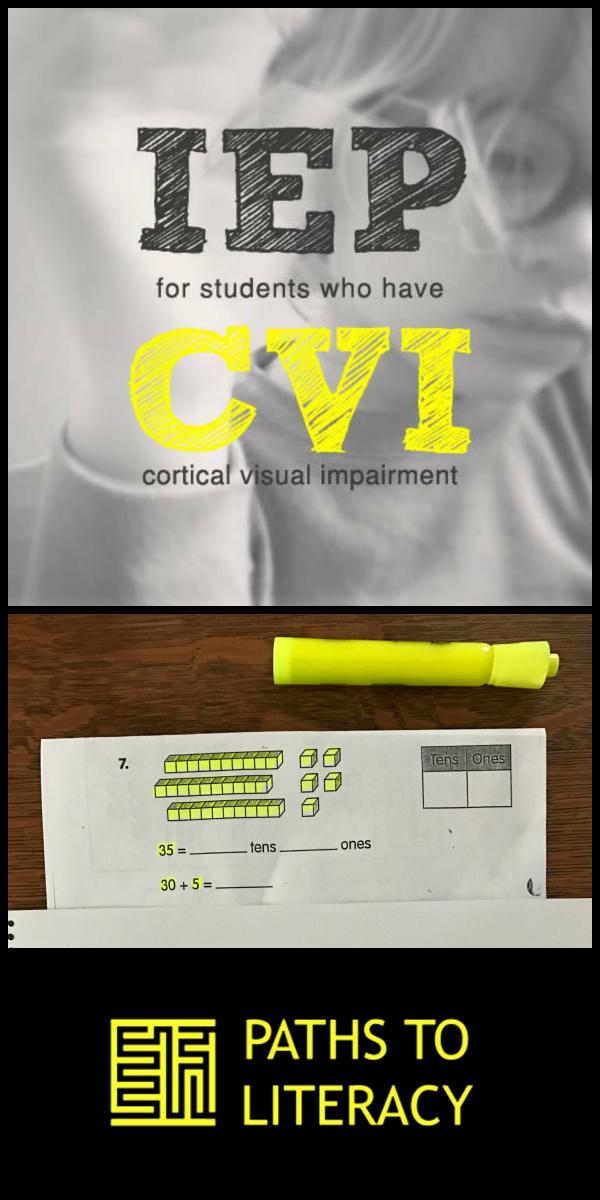

Comments
Well done. School districts
IEPs for CVI
Honoring TVIs capacity
re: Honoring TVIs capacity